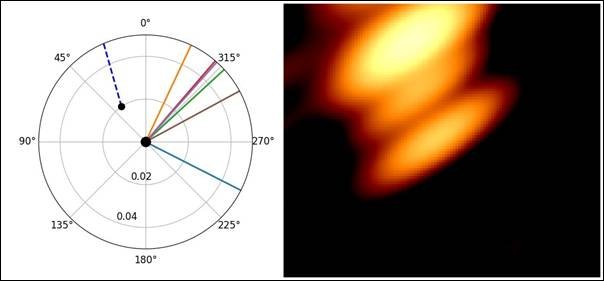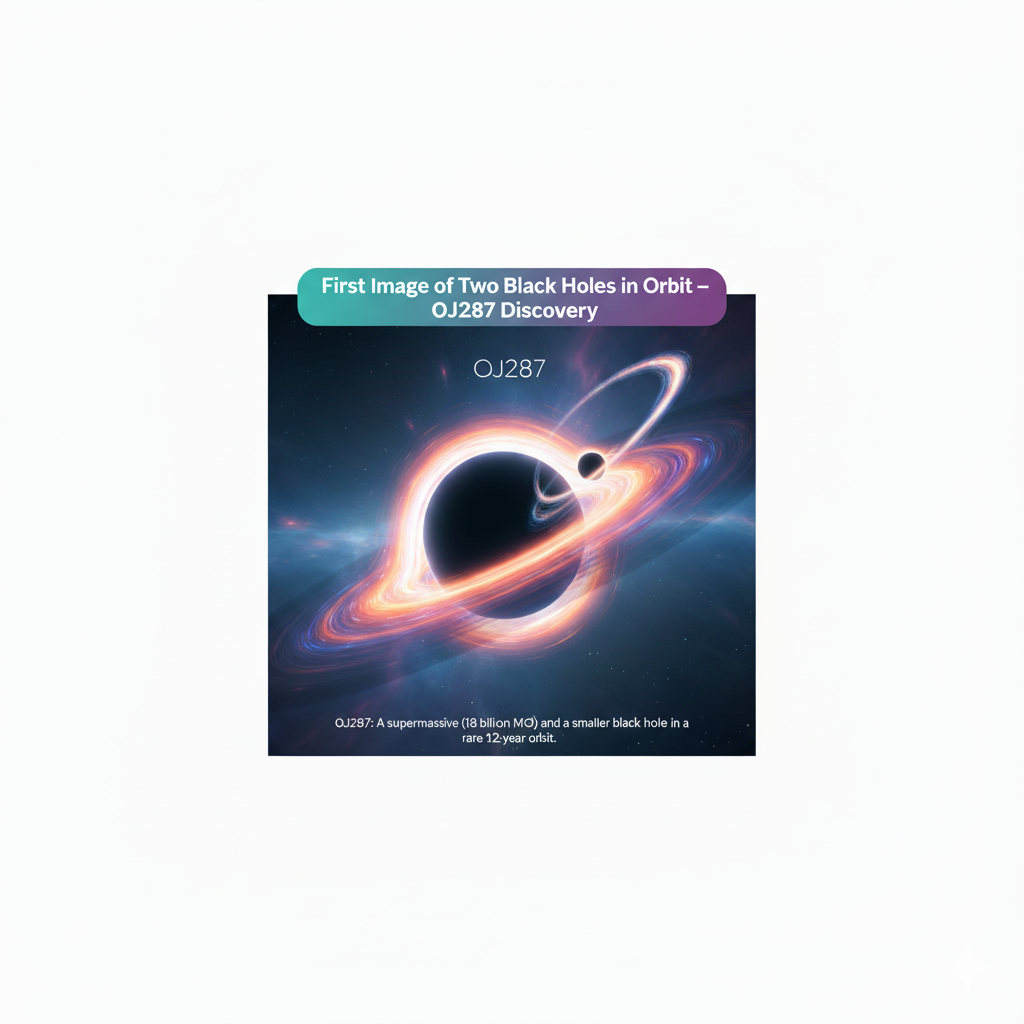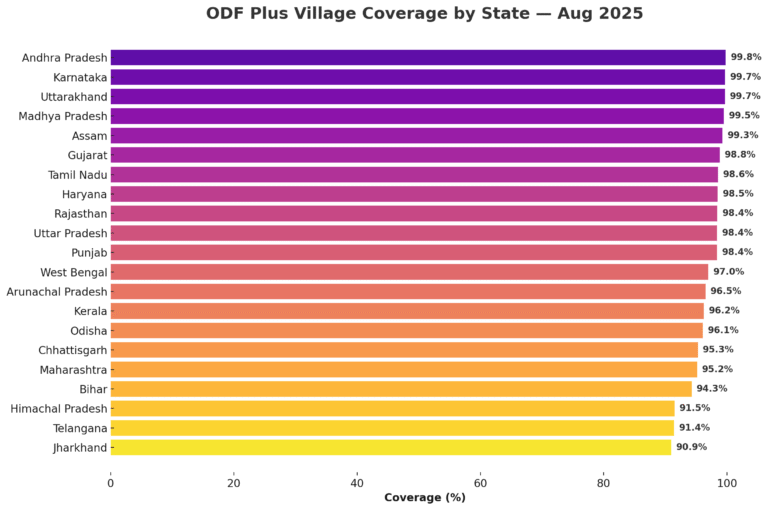Two Black Holes Captured in Orbit Around Each Other for the First Time
New Delhi, 10 OCT 2025 – In a cosmic breakthrough, astronomers including India’s ARIES and TIFR scientists have directly imaged two black holes orbiting each other, confirming a century-old prediction about galaxy OJ287.
Key Highlights
- Using RadioAstron, an international telescope network, astronomers captured two distinct black holes in quasar OJ287 – orbiting every 12 years.
- The discovery was led by Mauri Valtonen (University of Turku) with key contributions from Alok C. Gupta and Shubham Kishore (ARIES, Nainital) and A. Gopakumar (TIFR, Mumbai).
- The smaller black hole was seen launching a high-energy jet, twisting like a “wagging tail”, confirming long-standing orbital models.
- The phenomenon was earlier predicted through light pattern analysis dating back to 19th-century observations, verified in modern studies from 2018 and 2021.
- This discovery marks a first-ever spatial resolution of two black holes in orbit, offering insight into future gravitational wave events when such black holes collide.
- Findings published in the Astrophysical Journal confirm India’s growing role in global astrophysics research under the Department of Science & Technology (DST).
| Parameter | Detail / Observation | Significance |
|---|---|---|
| Object | Quasar OJ287 | Binary black hole system |
| Orbit Duration | 12 Years | Confirms periodic orbital motion |
| Brightening Event | 12 Hours | Equivalent to 100 galaxies’ brightness |
| Observed by | RadioAstron + Ground Telescopes | Unprecedented resolution |
| Indian Institutions | ARIES (Nainital), TIFR (Mumbai) | Core research contributors |

This first-ever visual confirmation of two black holes orbiting each other opens a new window into cosmic evolution. As they spiral closer, their eventual merger will create gravitational waves, enriching our understanding of space-time and the life cycles of galaxies.







